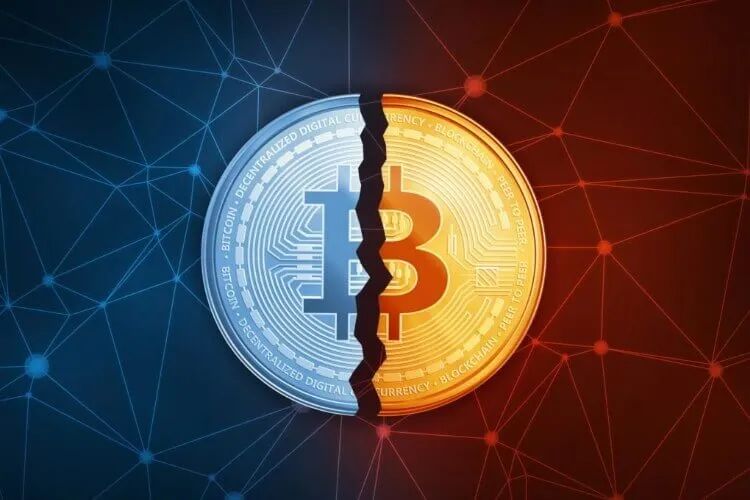What is the Bitcoin Halving and what does it mean for me? First, let’s cover the Bitcoin Network, which is a system that runs a peer-to-peer protocol through a collection of nodes or computers that stores data in blocks on the blockchain. Founded in 2009 by a person or group of people under the alias Satoshi Nakamoto, whose real identity remains unknown today. The Bitcoin network is based on distributed ledger technology that is decentralized and transparent, making the data publicly available to anyone interested, as all the transactions are forever recorded within the system. The Bitcoin network is an immutable digital ledger that is only appendable, meaning blocks can only be added onto it, forming an onward chain, but can never be removed, altered, or manipulated once recorded. Making it the most secure computer network ever conceived.
Transaction entries are recorded on the blockchain network as individual blocks, only after they have been verified by nodes. A node is a computer that runs the Bitcoin software, responsible for maintaining a record of the transactions on the Bitcoin network. After a transaction has been approved, it is then added to the next successive block which is then added to the chain of blocks, and the detail of the transaction is broadcasted to other nodes, notifying them of the transaction that just took place so all nodes are up to date.
Anyone can run a node on the Bitcoin network, for free, as long as they have enough computing power to run the whole software, though not all nodes qualify as miners.
What is Bitcoin Mining?
Bitcoin Mining is a process that creates new bitcoin. Currently, bitcoin mining consumes a lot of computing power. Miners receive a block reward for solving a mathematical equation that securely validates transactions included in each block. This is called a Proof Of Work mechanism.
Every 4 years, the block reward which miners receive for solving the mathematical equation gets cut in half. This is the event called the Bitcoin halving. For example, when Bitcoin was first created in 2009, the block reward was 50 bitcoins as a reward for solving the block. Four years after the first halving, the block reward was cut to 25. Another four years later cut to 12.5 and now to our current day, where the block reward is 6.25. However, the next Bitcoin Halving is predicted to occur on April 28, 2024, when the block reward will drop to 3.125 Bitcoin. Each bitcoin halving creates a supply shock and generally triggers a subsequent aggressive price increase.
Traditional or fiat currency is more likely to lead to inflation, as central banks continue to print money, creating an environment with more currency in circulation. The bitcoin halving theory is designed to maintain scarcity as a means of combating or managing inflation.
How does creating more Bitcoin reduce inflation?
According to theory, the inflation rate of bitcoin can be decreased with each halving, scheduled to happen every four years (after each successive 210,000 blocks is mined) until the year 2140, when bitcoin has reached its supply cap (of 21 million bitcoin) and no more new bitcoin can be created. There is a hard cap on the fixed supply of Bitcoin at 21 million. This is just the principle of supply and demand. So instead of “printing” new bitcoin, the block reward given to miners is cut in half creating a drop in supply and historically a price increase. The first halving occurred in November 2012, followed by another in July 2016 before the most recent in May 2020. The next halving event is expected by April 2024, even though no one is certain. But expectations are high regarding the price increase as the bitcoin halving is typically the strongest signal of the kickoff of each bull market.

Benefits of Bitcoin halving
1. It makes Bitcoin more valuable by reducing the supply
2. It increases the Bitcoin network security
3. It generally leads to a more competitive mining market, which increases the hash power used to secure the network

Conclusion
The Bitcoin Halving event has historically created hysteria around cryptocurrency and is seen as the kickoff to each bull market run. It is important for investors to understand the economics of Bitcoin and the Bitcoin Protocol. Increased volatility is expected and the price of Bitcoin has historically followed a pattern and increased exponentially in price after each halving. According to Jamie Douglas Coutts, a Bloomberg Intelligence analyst, the halving rally is expected to start around $50,000 by April 2024 and rise several multiples.
However, since the increase in price does not occur immediately but is stretched out, it is best not to focus on the price increase but on the growth of the entire network.
Don’t miss out on trading the bitcoin halving, join VTRADER today!
Written By Anthonymark


